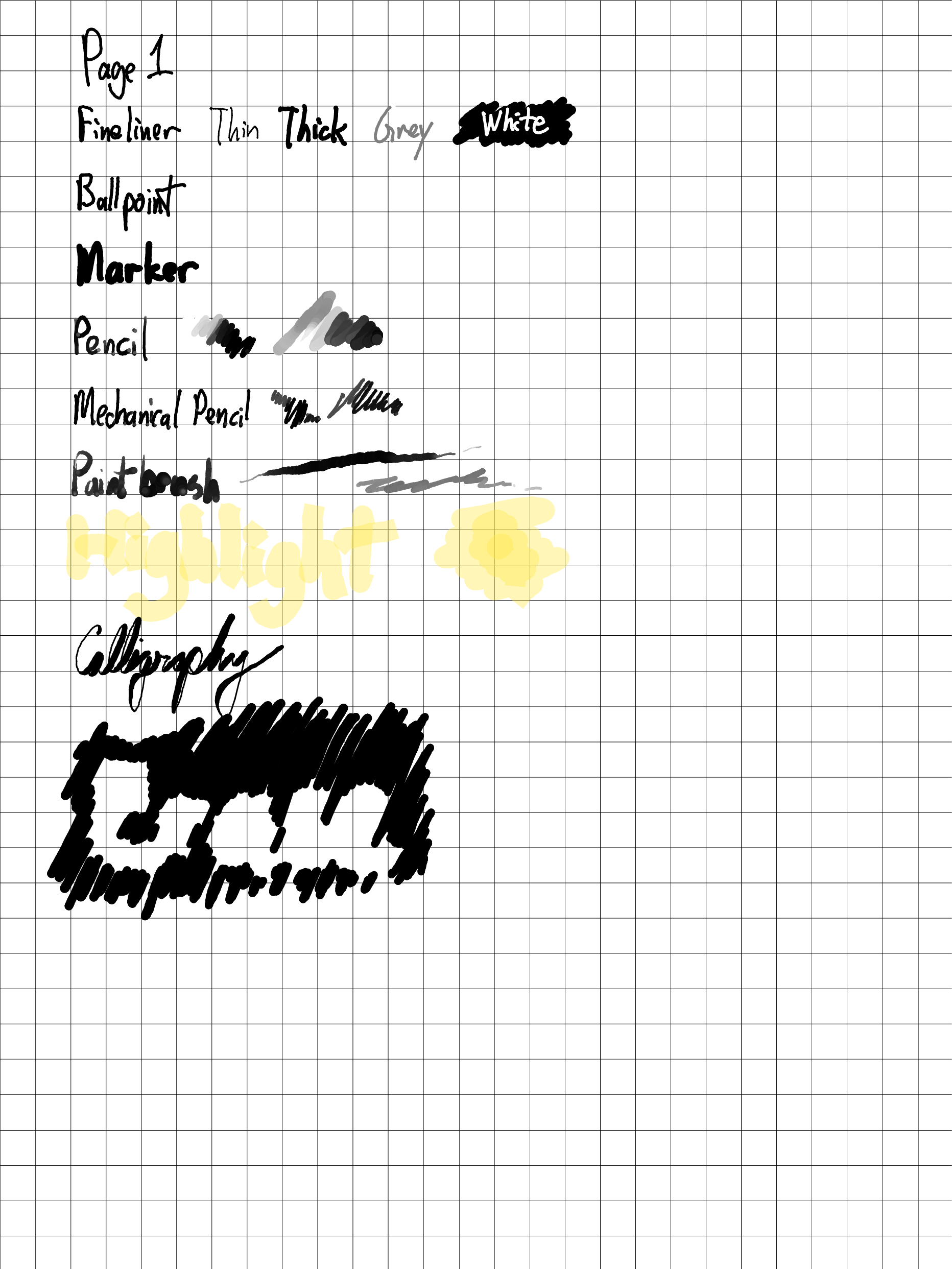rmrl: reMarkable Rendering Library
rmrl is a Python library for rendering reMarkable documents to PDF files. It takes the original PDF document and the files describing your annotations, combining them to produce a document close to what reMarkable itself would output.
Demo
The same notebook was rendered to a PDF via the reMarkable app and rmrl. The resultant PDF files were converted to PNGs with ImageMagick at 300 dpi.
| reMarkable output | rmrl output |
|---|---|
 |
 |
The biggest differences are the lack of texture in the pencils and paintbrush,
which we hope to address in the future. The highlight color is also different,
but we feel the default color is too subtle.
Installation
rmrl requires Python 3.7 or later. If that's installed, the easiest installation
is to do a
pip install rmrl
Alternatively, you may clone this repository. Poetry is used for development, so once that is installed you can run
poetry install
to get a virtual environment all set up.
Usage
The main interface to rmrl is through a single function:
from rmrl import render
output = render(source)
source may be:
- The filename of a zip file containing the document.
- The filename of any (root-level) file from an unpacked document.
- Any object that provides
open()andexists()methods. See
rmrl/sources.pyfor more details on this API.
The output is a filestream with the contents of the PDF file.
The render function takes the following keyword arguments:
progress_cb: A callback function to be called periodically during the
rendering process. It will be called with a single argument, a number
from 0 to 100 indicating the progress. This function can abort the
process by raising an exception.
Command-line Usage
rmrl may be called as a command-line tool. Once it has been installed, run
python -m rmrl filename
to convert filename to an annotated PDF. The default output is to stdout.
Use
python -m rmrl -h
to see all of the options.
Templates
rmrl can use the reMarkable templates as a background when rendering notebooks.
We cannot ship copies of these templates. You may be allowed to copy them from
your own reMarkable device on to your computer for personal use. If this is
legal in your jurisdiction, you may connect your device to your computer by the
USB cable and run
python -m rmrl.load_templates
This will copy these templates to ~/.local/share/rmrl/templates (assuming
default XDG settings).
History
rmrl derives from the reMarkable Connection Utility,
by Davis Remmel. RCU is a full-featured GUI for managing all aspects of a
reMarkable device. Do check it out if you are looking for a stand-alone
solution for getting documents on and off of your device.
RCU was chosen as a base for rmrl due to its high-quality rendering. The
following are the major changes:
- rmrl is designed as a library, for incorporation into other programs. RCU
is designed as a stand-alone program. - rmrl uses the pure-Python ReportLab Toolkit
for rendering PDF files. RCU uses the Qt framework, which is a significantly
heavier installation. - rmrl only supports vector output, while RCU offers both raster and vector
rendering. - RCU supports PDF layers (Optional Content Groups). At this point, rmrl does
not. - RCU can add PDF annotations corresponding to highlights. At this point, rmrl
does not.
Trademarks
reMarkable(R) is a registered trademark of reMarkable AS. rmrl is not
affiliated with, or endorsed by, reMarkable AS. The use of “reMarkable”
in this work refers to the company’s e-paper tablet product(s).






